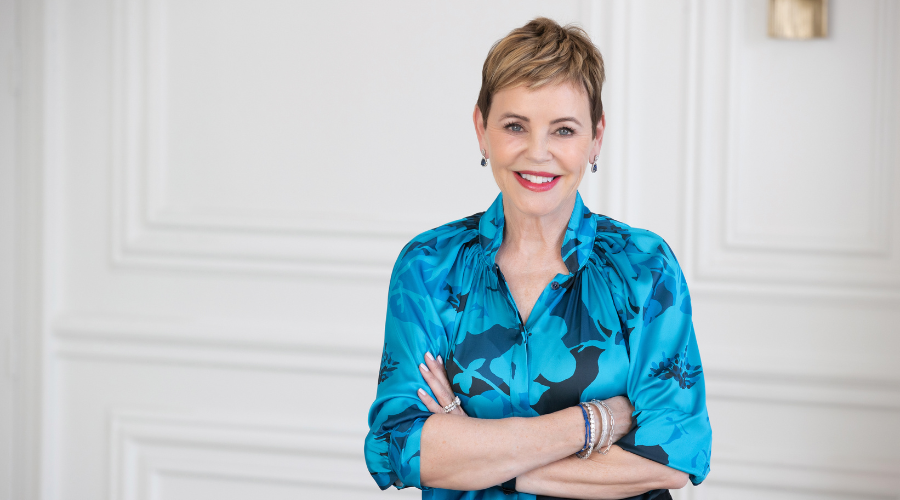Many of the most creative people I know are not artists in the capital A sense of the word. They’re not traditional artists, that is, engaged in painting or writing or making music. Instead they’re chefs, gardeners, potters, quilters, bloggers and decorators. I am particularly interested in mature women who turn into fashionistas and are so visually appealing that films are being made about them. An example is 96 year-old fashion icon Iris Apfel who consults and lectures about style. In 2013, she was listed as one of the fifty “Best-Dressed over 50” by The Guardian. Apfel is the star of a documentary by Albert Maysles called Iris.
Many creatives take up a passion or hobby after 55 years of age when retirement is looming or after retiring when there is ample time and mental space to consider what they really wish to do, what they are good at doing or what they could become adept at doing.
When older adults open themselves up to the creative spirit, something magnificent happens. They have a lifetime of experience behind them, and a deep well of memories that feed art. What is art, after all, other than memory distilled into tangible, communicative forms? An immaculately designed garden, a gracefully woodworked canoe or a glamorously dressed woman counts.
One of the wonderful attributes about getting creative is that creativity has no boundaries, not age, gender, education or social status.
My friend, Barry Lord, who passed away in 2017, was probably the most creative person I’ve known. He didn’t paint or write poetry, that I know of. The final book of seven he published, Art and Energy (2014), is an entirely original theory about how artistic endeavors are tied to the planet’s reliance on different forms of energy. Lord connects creativity to the material realities of the earth.
Barry lived an entirely creative life. Born in 1939 to a working class Hamilton, Ontario family, he was raised by his single mother, and became one of the foremost art historians and museum planners in Canada. He was the antithesis of the classic art snob. Barry loved people. He and his wife, Gail Dexter Lord, founded Lord Cultural Resources, today the largest museum consulting firm in the world. Together, as co-presidents, they managed hundreds upon hundreds of artistic showcases and projects across the globe from India to Iceland.
One of the firm’s jewels in the crown is the Canadian Museum for Human Rights in Winnipeg, on which the firm worked for 14 years as consultants, taking the original idea to completion on its opening day in 2014.
Another is Constitution Hill in South Africa. The company advised on the development of the Old Fort Prison in Johannesburg where both Nelson Mandela and Mahatma Gandhi were imprisoned at different times in history. It has become a site of memory and reflection, next to the new Constitutional Court of South Africa.
When I visited the Lords’ Yorkville condo overlooking the ROM (Royal Ontario Museum) in 2016, Barry spent the evening talking about the original art in their spacious home, although he was suffering from the condition that would eventually take his life. He adored each piece for its own unique expression, and on this occasion he also waxed eloquent about his precious Blue Jays, whom he adored with the same intensity as his artistic collection.
The final time I visited Barry, he was in hospital, with Gail sitting at his bedside, reviewing the wording of a new proposal by their firm. He remained engaged until the end.
Today in their mid-town Toronto office, next to Barry’s old desk, is a map of the world with pins placed in each location where Lord Cultural Resources worked on a project. There are few regions where they did not travel and where, with Gail’s theory of soft power, did not exert a positive influence.
Both Barry and Gail originated new ideas when Barry was in his seventies and Gail in her sixties. At the time, Barry became concerned about the condition of the planet so he developed a theory about the relationship between art and energy. He was 73 when he published the book.
According to Gail Lord, who continues to head the firm, she wished to connect cities and the idea of soft power so in 2015 she published Cities, Museums and Soft Power. “In 2008, more than half of the world’s population is living in cities. The world as a whole has became urban,” she explains, “and I became interested in the relationship between museums and cities. The next step was to understand how cities are becoming forces of change in areas such as poverty, migration, climate change, democracy and human rights. This type of influence is soft power because cities don’t have armies. Cities can set agendas through soft power.”
One way older adults can think about getting creative is how “overachievers are devoting their time to pursuits such as book writing and boat building.” This headline from The New York Times talks about forgoing holidays to start something creative. Although the article is not limited to older adults, it’s relevant. Diving into a creative project is an “all encompassing endeavor that offers deeper meaning for those eager to test themselves beyond another zip-line course or desert safari,” according to The Times.
I like the idea because it’s a genuine way to forgo expensive vacations and can be categorized as a “staycation,” while allowing you to have a legitimate excuse to beg off social engagements or obligatory tasks. If you’re building a canoe, designing a garden or preparing for a photographic exhibit, it makes sense to cut yourself off from bothersome obligations and concentrate on your creative self.
For older adults it gives purpose and meaning to what otherwise can become the tedium of unstructured days. Or it can hook us up with others of like minds who are engaged in similar pursuits. Collaborating with other creatives is one of the greatest joys of later-in-life enterprises.
For me, going to the Stratford Shakespearean Festival, an inspirational drive if you take country roads, brings me into touch with my authentic self, the one who finds complete fulfillment in writing. It’s while watching a good play that my mind —or imagination— or whatever you wish to call it, comes up with the thoughts —and feelings— that will propel a new novel or a new blog. Recent trips to Stratford got me deep into doubling down on my next Freda Linton historical thriller: working title, The Heat of the Moment.
Creativity rubs offs. Spend time at the theatre or the symphony or a museum and you’ll find your mind expanding rather than contracting. Retirement can be about growing, not shrinking if you give yourself a chance.































